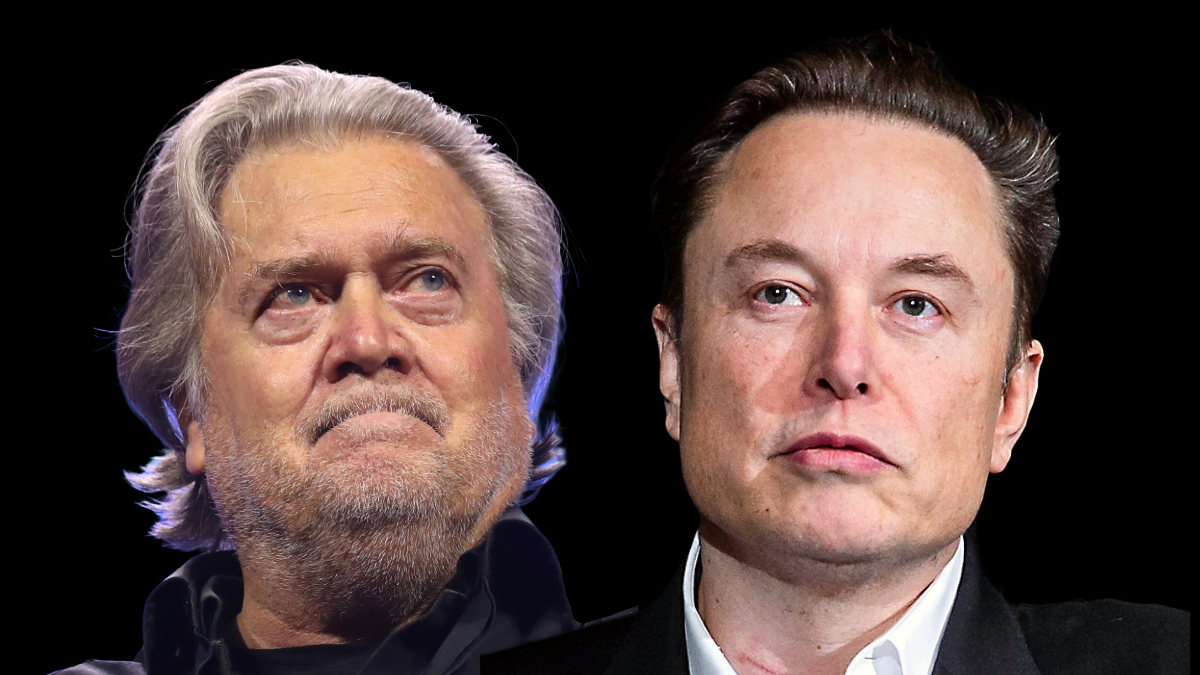The Stakes for the Cybersecurity Workforce in the US Immigration Debate
Bridget Chan / Jan 31, 2025A social media showdown between the billionaire Trump backer Elon Musk and far-right media personality Steven Bannon in December revealed how immigration policies will likely create fissures between the Big Tech oligarchs and hardline immigration proponents in President Donald Trump’s coalition. Musk, who defended the need for H-1B’s to fill the “permanent shortage of excellent engineering talent,” was confronted on X by Bannon, who is historically a nativist. Trump ultimately stepped in, coming out in favor of the H-1B program and claiming he’s leveraged its benefits for his companies. While the news has moved onto other conflicts between those in Trump’s inner circle, the exchange raises significant questions about America’s workforce readiness and the role of immigration in filling the oft-cited cyber workforce shortage.
Maintaining a strong pipeline for foreign talent buys the US time to maintain a competitive edge, but these pipelines are at risk. A centerpiece of the Trump campaign was the demonization of immigrants through derogatory language, and the media has extensively covered the threats that Trump and his allies levy against immigrants, particularly those on the US-Mexico border. The series of executive orders released since Trump’s inauguration are more than just shock and awe– they are an alarming indication of the boundaries the administration is willing to push on the issue of immigration. The Musk-Bannon exchange captures a finer point that the Trump Administration’s immigration policy has yet to articulate: foreign talent must continue to have viable entryways into the US workforce for the sake of American competitiveness and innovation.
Investments Now Make Returns…Later
The cybersecurity workforce gap has been a persistent issue since 2017, when the demand for cybersecurity workers first outpaced the number of workers available, according to CyberSeek’s numbers. ICS2’s annual report on cybersecurity employment states that the current workforce shortage is 504,307, a 4.4% increase from the 2023 workforce gap. Although it’s difficult to equate a labor shortage to demand for cybersecurity jobs, organizations still face constraints such as budget challenges and competing business priorities. The Biden Administration attempted to incentivize businesses by expanding training and apprenticeship programs and involving private businesses to invest in developing the cyber workforce. The CHIPS and Science Act not only focused on developing US tech manufacturing capabilities but also focused on preparing the workforce to enter growing sectors like clean energy, digital services, and semiconductors, including increasing apprenticeship programs nationwide and lowering financial barriers to STEM careers and degrees. The Registered Apprenticeships program, which began in 1937, received a multi-million dollar commitment to its IT and cybersecurity, advanced manufacturing, and supply chain programs. Stakeholders in industry, nonprofits, and academia also pledged resources and other investments into getting more individuals into the cybersecurity workforce.
The issue is that systemic investments like the Biden Administration’s take time to pay off. Fortunately, money that was appropriated during the Biden Administration with a timeframe overlapping with the Trump Administration must be honored. Still, individuals who enter apprenticeship programs will take time to enter the workforce and fill jobs. Promised grants from the federal government take months to be dispensed to grantees, and it takes even longer for training and apprenticeship programs to have a sizable impact on national workforce numbers. (At the time of writing, it is unclear what Trump’s freeze on federal grants means for this program.) The issue is that there is a workforce shortage now, and the risks are only increasing as more organizations and agencies are raising the alarm about AI-enabled cyberattacks and competition with China, among other immediate challenges.
There must be a solution that addresses the workforce shortage now as the nation cultivates the next wave of US tech and cybersecurity workers. Employing foreign talent can bolster US cybersecurity now, but the incoming Trump Administration’s position on immigration will pose challenges to addressing this workforce gap and securing the nation’s technology industry.
The Strategic Alignment Between Biden and Trump
There are few indicators that reliably point to the trajectory of the second Trump Administration’s cybersecurity workforce policy, but there was some alignment between the first Trump administration and the Biden approach. Trump’s 2018 National Cyber Strategy acknowledged that “a highly skilled cybersecurity workforce is a strategic national security advantage” and indicated the need to attract foreign talent. It also leaned heavily on strengthening the domestic pipeline, including through training programs and investing in reskilling existing workers for cybersecurity roles. The Biden administration focused on similar areas, particularly in apprenticeships and lowering barriers to education and learning, and specifically pointed out in the 2023 National Cyber Workforce Strategy that immigration policies that encourage talent retention are a core line of effort to strengthen the workforce.
In addition to strategic alignment, the first Trump Administration issued Executive Orders 13800 and 13870 that focused on “improv[ing] the Nation's cyber posture and capabilities in the face of intensifying cybersecurity threats” through technical modernization and facilitating upskilling and knowledge-sharing on cybersecurity across the federal workforce. These initiatives were built up during the Biden administration, such as the commitment to transition 2210-series jobs, or roles coded for Information Technology Management, shifting hiring processes to focus on skills-based hiring rather than degree-based hiring.
While the strategic alignment between the first Trump administration and the Biden administration is promising, the lack of legislation means there is no guarantee changes implemented in the Biden Administration must be honored in the second Trump Administration. There is no legislative mechanism forcing the new Office of Management and Budget Director Russell Vought to honor the transition of 2210-series jobs. Executive orders, including the directive expanding the Registered Apprenticeships program mentioned earlier, are reversible, and those investments can be diverted elsewhere within agencies. The commitments the Biden Administration made are notable but fallible. While these investments face an unknown future, the pipeline for foreign talent faces a clearer but more troubling future.
Foreign STEM talent is needed but faces a bleak future
At the time of this writing, it still remains to be seen who the Trump administration will tap to lead cybersecurity, but there are clear signals regarding the direction it will take on immigration policy. The work of the first Trump administration focused on discouraging employers and skilled foreign workers from immigrating through rulings in the federal court systems. In March 2020, the software company Taylor Made Software sued the US Citizen and Immigration Services (USCIS), which oversees the H-1B approval process, over their rejection of a prospective worker who did not have the correct educational credentials needed to meet the definition of a “specialty occupation.” USCIS eventually lost the case, but an interim final rule was issued by Homeland Security in October 2020 that attempted to narrowly define key rules in the H-1B process, including limiting the types of jobs eligible for the H-1B program, narrowly defining when an employer can apply for H-1B, and limiting the valid time of the visa to 1 year. All these additional requirements increased the costs to employers seeking foreign talent. In early 2021, the Department of Homeland Security handed down a final ruling regarding the selection process for visa recipients, mandating that they must be selected starting with the highest wage levels and working down until the annual limits had been reached.
Taken together, these rulings focused on narrowing the standards for foreign workers to qualify for visas while simultaneously raising the costs for employers to bring talent from overseas. The marked increased rates of H-1B petition denials in 2018 and 2019, reaching 24% and 21%, respectively, are evidence of the administration's efforts to limit the entry of overseas talent. COVID-19 was also an opportunity for the Trump administration to enact further limitations on foreign workers, suspending H-1Bs and student visas in June 2020.
Influential individuals who are widely credited for masterminding the restrictions around foreign workers during the first administration are set to return to the administration but will be fighting for influence against a growing wing of technology investors. Stephen Miller, who frequently espoused anti-immigrant sentiments and pushed damaging policy and narratives during the first Trump administration, returned as Trump’s deputy chief of staff for policy. He is widely believed to have outsized power over immigration policy because of his position within the executive branch and his network of legal experts stemming from his work at America First Legal. Known for implementing the family separation policy and spearheading the travel ban from Muslim countries during the first Trump administration, Miller has signaled his interest in limiting all immigration labor, whether through the H-1B program or any other worker visa category. Another figure who will be influential in executing the Trump administration’s immigration policy is former South Dakota Governor Kristi Noem. During her confirmation hearing to lead the Department of Homeland Security on January 17, Noem committed to reinstating the Trump administration’s “remain in Mexico” program and executing deportation activities, meaning we can expect a unified front from her and Miller.
Conversely, a growing circle of tech billionaires will likely throw a wrench into anti-immigration policy priorities. Elon Musk, Mark Zuckerberg, and Jeff Bezos, all of whom own companies that benefit greatly from the H-1B visa programs, will likely push back on any efforts to further restrict inflows of foreign STEM talent into the US. Trump ultimately sided with Musk during his online feud with Bannon, but there are still four more years of a second Trump administration to see what immigration policies will ultimately win out and how the workforce will be impacted.
Leverage the US Advantage
While it will take several years for domestic workforce education investments to pay off, there must be a solution now. The world is facing a global cybersecurity workforce shortage, but the US has a competitive advantage by virtue of its higher wages and a prevailing reputation that the US continues to offer a lucrative job market and social mobility. Companies are already steeling themselves for the outsized impacts of immigration restrictions, predicting that the incoming administration will put sand in the gears of visa applications and approvals, increasing scrutiny on employers and hurting workforce retention rates. The federal government does not need to put companies on the defensive; therefore, it is imperative that we do not let anti-immigration sentiment erase the role immigrants play in giving the US a competitive edge in technology and innovation.
Authors

